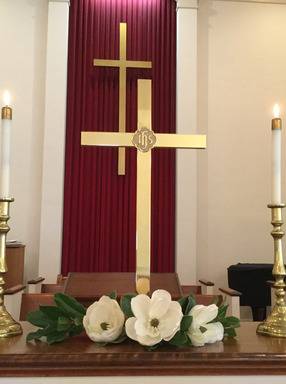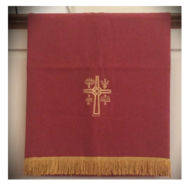Liturgical colors can orient us to the season of the church year and help to engage the sense of sight in worship. This was not always the case. For the first thousand years of the church's history, little thought was given to liturgical color. White vestments were most common, with more elaborate garments and paraments (of whatever color) reserved for important festivals. The 12th through 16th centuries brought localized experiments with liturgical color, but no standard practices prevailed until 1570, when the Roman Catholic Church established a normative sequence of colors to accompany the church calendar. Calvinists in the 16th century eschewed these rubrics, however, preferring black vestments. The past two centuries have seen a resurgence in the use of liturgical colors, propelled by a new appreciation for the aesthetic dimensions of worship.
Source: https://presbyterianmission.org/ministires/worship/faq/faq-signssymbols/









